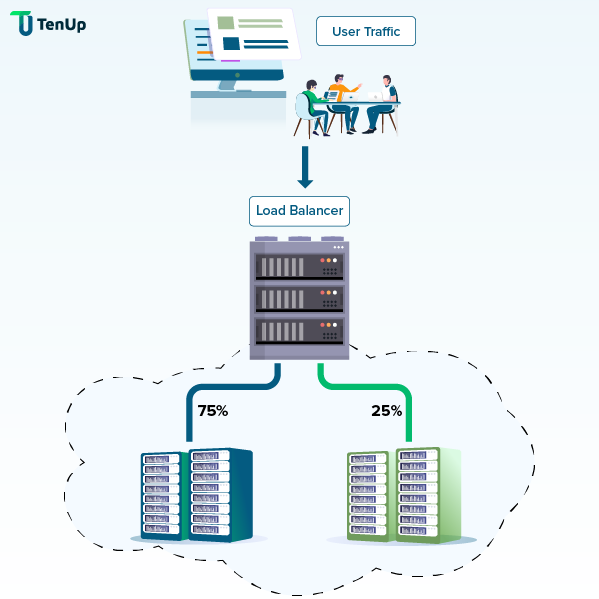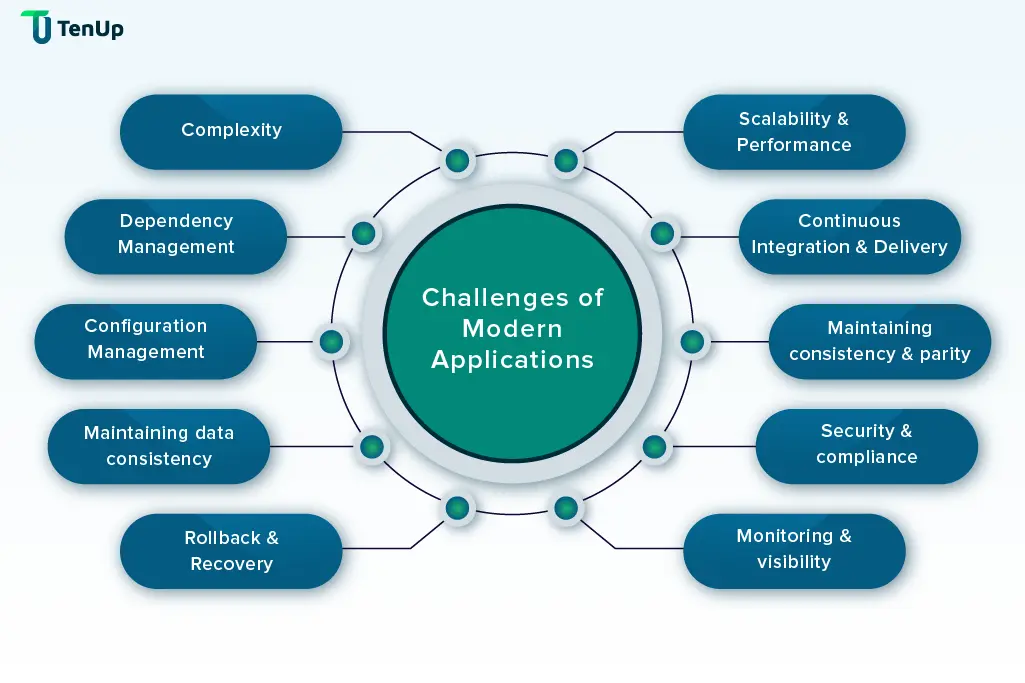#CICD#DevOps
In the ever-changing world of application development, it is critical to release software upgrades swiftly and safely.
2023 has been a year of development, but there’s still some ground to cover. Businesses must examine deployment options that provide seamless updates while minimizing downtime and risk. Blue-green deployments and canary deployments are still popular options because they allow for smooth transitions between versions and controlled rollouts to obtain feedback.


Furthermore, rolling deployments, feature toggles, and infrastructure as code (IaC) give flexibility and automation, while progressive delivery and serverless deployments allow fine-grained control and scalability.
Deploying applications in modern environments comes with unique challenges that demand efficient strategies to ensure smooth and reliable updates. This blog explores a few popular application deployment strategies—Blue-Green Deployments and Canary Deployments—and highlights their components, pros, and cons. By understanding these application deployment strategies and adopting best practices, teams can achieve confidence in their deployments and minimize downtime and failures.

Deployment strategies aim to minimize downtime, mitigate risks, and ensure a smooth and reliable deployment process. Modern applications face complexities due to factors such as microservice architecture, containerization, and scalability. These challenges make it critical to have robust deployment strategies that address issues like downtime, data consistency, and version compatibility.
Minimizing downtime and reducing the impact of failures during deployments is essential to maintaining the availability and reliability of applications. It is important to understand that long periods of downtime can also result in user frustration, loss of revenue, and damage to the organization's reputation. By utilizing effective application deployment strategies, organizations can ensure that updates are released smoothly, with minimal disruptions.
This, in turn, leads to an improved user experience, increased customer satisfaction, and the ability to rapidly iterate and improve applications while maintaining a stable environment. Therefore, let us understand how blue-green and canary deployments can help your organization deploy with ease.
Blue-Green Deployment is a deployment strategy that utilizes two identical environments, a "blue" (aka staging) and a "green" (aka production) environment, with different versions of an application or service. It is simple, fast, well-understood, and easy to implement and roll back.
However, the cost is a drawback, and quality assurance and user acceptance testing may not identify all of the anomalies or regressions.
An example of a Blue-Green deployment is an e-commerce website. Let us understand this with a hypothetical scenario.
A development team has been working on a new version of an e-commerce website with additional features and improvements in the "blue" environment. To ensure the new version's stability and compatibility, the team conducts thorough quality assurance and user acceptance testing. Once confident in the new version's performance, they start routing a small portion of user traffic to the blue environment alongside the green environment. This gradual rollout allows the team to monitor the performance and user experience of the new version in a real-world scenario, gathering feedback and identifying any potential issues.
Hence, the Blue-Green Deployment strategy offers simplicity, speed, and a well-understood process for deploying and rolling back changes.
Canary deployment involves deploying a new version of an application or service to a small subset of users or servers known as the canary group while the majority of users or servers continue to utilize the stable version. Canary deployments are used to make changes gradually, assess their impact, and gather feedback before completely distributing them to the entire user base.
Let us consider the following example to demonstrate the key components of canary deployments:
Assume a popular e-commerce website wants to improve the user experience by introducing a new checkout process. They decide on canary deployments to ensure a smooth transition and reduce the danger of any potential problems.
Traffic Routing: The website uses a load balancer to route user traffic between two groups: stable and canary. Only a tiny fraction of user requests, say 5%, are first routed to the canary group, while the remaining 95% are processed by the stable group.
Canary Analysis: Monitoring tools collect metrics from both stable and canary groups to compare performance and behavior.
Gradual Rollout: As the canary analysis proceeds and positive results are obtained, the website gradually increases the percentage of user traffic sent to the canary group. This staged rollout allows the team to closely evaluate the impact of the new checkout procedure and get feedback from customers.
In conclusion, deploying software applications smoothly and reliably requires adherence to a set of best practices. These practices include:
Automation: By automating the deployment process, you may decrease human errors, assure consistency, and release more frequently.
Thorough Testing:Comprehensive testing, which includes unit tests, integration tests, and user acceptance tests, aids in the early identification and resolution of issues or bugs, resulting in a higher-quality release.
Version Control: Using version control systems allows you to track changes, manage branches, and roll back to earlier stable versions if necessary.
Establishing a well-defined release management process aids in the organization and coordination of deployments, ensuring that the correct versions are deployed to the proper environments.
Rollback strategy: Having a rollback strategy in place enables speedy reverting to a previous stable version in the event of issues or errors during distribution, reducing user damage.
User Feedback and Feedback Loops: Collecting user feedback and creating feedback loops enables companies to gain insights, solve user concerns, and continuously enhance the application based on real-world usage.
Similarly, monitoring application performance, user experience metrics, logs and error tracking, infrastructure and resource monitoring, and providing alerting and incident response methods guarantee that any issues that develop after deployment are addressed swiftly.
At TenUp, we believe in providing solutions that eliminate roadblocks. Get in touch with our team of experts to help you build a strategy to deploy with ease.
Application deployment strategies provide smooth and reliable deployment of updates. These practices include automation, thorough testing, version control, release management, rollback planning, and much more. In this blog, we have discussed some excellent strategies to help you deploy updates efficiently and without error.